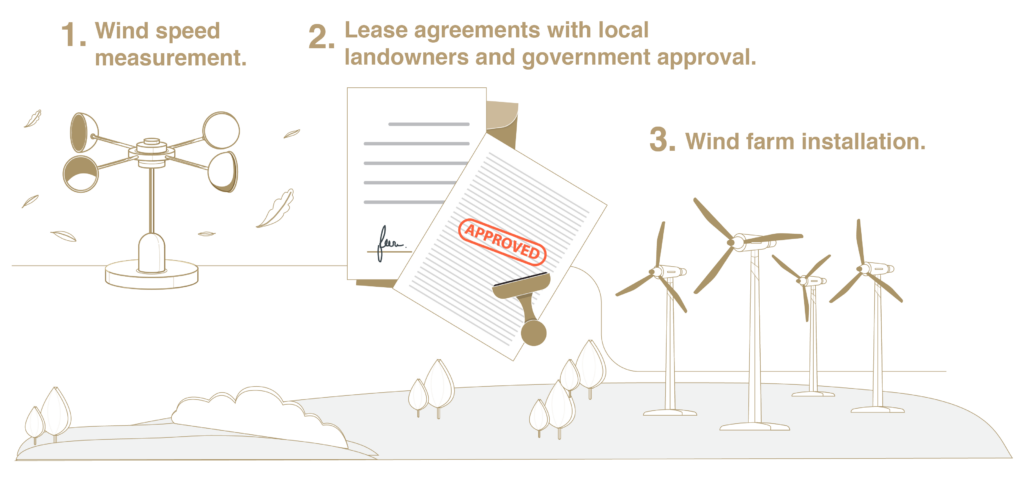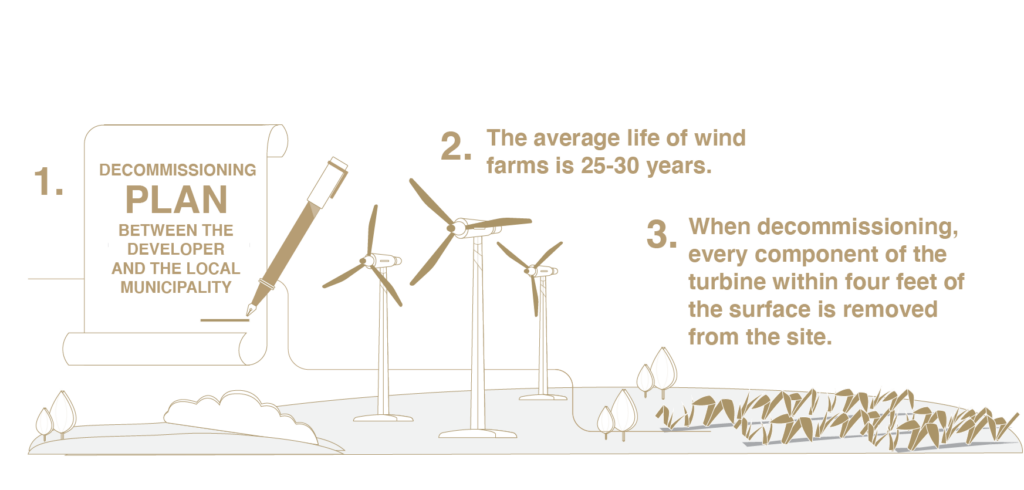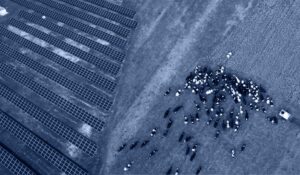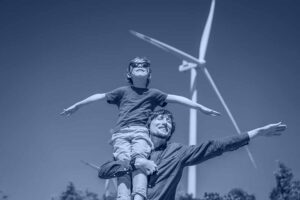Wind Energy
We value the safe installation and operation of wind energy developments and look to help local governments and communities with the best policies to foster these developments to achieve emission reduction goals and deliver reliable and cost-effective energy.
Wind Energy Projects At-a-Glance
A wind developer measures wind speed and consistency at a declared location. All the findings and benefits of wind are shared with the local community.
Wind developers reach voluntary lease agreements with local landowners.
Wind projects must first receive an approval for construction in a desired area. Typically, an application is first reviewed by the local zoning board. Development agreements between the wind developer and the relevant local jurisdiction are reviewed by local elected officials, with input from the community
Once the permitting process is complete, the construction of the wind farm can begin. The land is graded and the pads where the wind turbines will sit are leveled. A concrete foundation is then laid into the ground, followed by the installation of the underground cables. These cables connect the wind turbines to each other in a series.

How Does a Wind Turbine Work?
Each wind turbine is made up of a tower, a rotor, the nacelle housing the generator, and electronics for control. First, the tower is put together and raised into position, then the fiberglass nacelle is added, and finally, the blades are bolted on.

Wind Turbines and Noise
While noise from wind turbines is not typically a problem, wind companies will work to mitigate sound by:
Distance
Maximizing the distance of wind turbines from nearby inhabited buildings or property lines
Mode
Changing turbine operating modes depending on wind conditions
Easement
Creating “sound easements” on adjacent property that give the developer the right to generate sound carrying over onto that property
Wind Turbine Shadows
Shadow Flicker occurs when rotating wind turbine blades pass between the sun and an individual’s home, casting a periodic shadow that may result in a flickering phenomenon. This phenomenon is considered during the construction of the wind farms and companies mitigate this by adjusting and testing the location and size of the turbine.
Constructing a wind farm can typically take 2-6 months, though larger wind farms can usually take around a year.
Decommissioning of Wind Farms
Wind farms can typically operate for 25-30 years. The decommissioning plan is usually decided on before construction. Every component of the turbine within four feet of the surface is removed from the site. This ensures farming, ranching and other future land uses can continue, unimpeded by any remnants of the wind farm.




